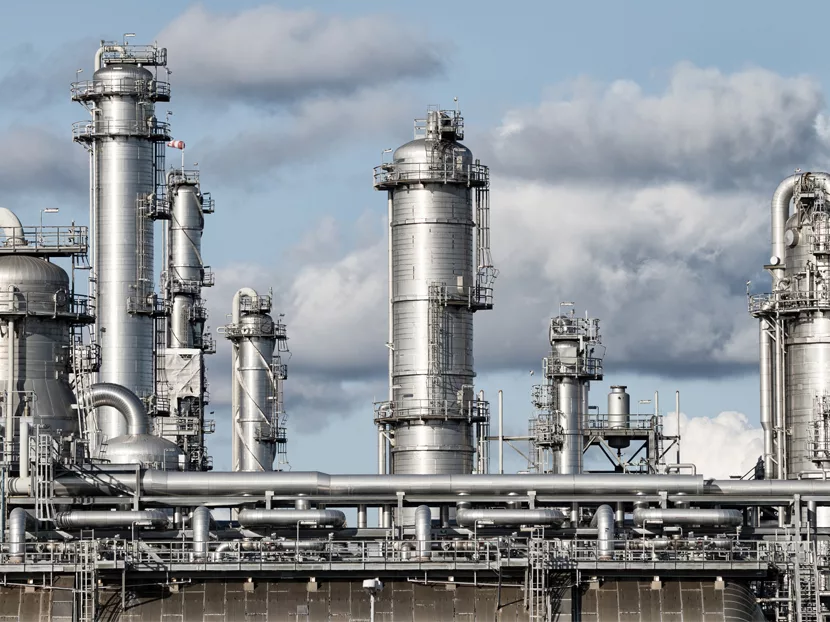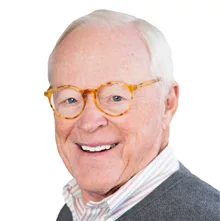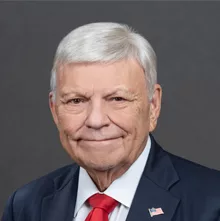The Wholesaler has been fortunate to have the dynamic duo of Steve Letko and Tom Brown write a monthly column on the PVF industry. Both seasoned industry veterans, their combined knowledge and guidance have become an industry institution — and brought to life within these pages. With Steve as the PVF industry expert and Tom reporting on the operations and happenings in the full channel, they provided great insight.
The only thing constant is change. This month’s column will be one of the last in the series for the duo; it will take on a new direction with Steve leading the charge in the coming months. Tom, with his many years of industry involvement, has decided to take more time to relax and play more golf — and let the PVF expert lead the charge in 2019.
Thank you for your insight and support to the PVF channel, Tom, and we look forward to Steve’s perspective in April.
Tom M. Brown: Steve, we have known each other for many years and I have enjoyed the column collaboration to bring our perspective on the PVF industry. I’ve been very lucky through my work and travels to meet many wonderful individuals and companies. Thank-you for being a great column partner and friend.
Steve Letko: Tom, I, too, have enjoyed working with you on the column. We have developed a great friendship over the years and one I sincerely cherish. I look forward to maintaining our close relationship as you move on to another chapter in your life. Stay healthy, my friend, and lower that handicap!
TMB: Back to business — what do you see as the current climate of the PVF industry?
SL: The PVF industry is healthy coming off a good 2018 and remains strong as we enter the first quarter of 2019. The industry is generally pleased with the Trump administration’s efforts to reduce excessive regulations imposed on the energy sector, allowing projects to move forward in 2019. Also, the industry likes the USMCA free-trade-agreement, as Canada and Mexico are our best energy customers.
Announced construction starts and maintenance projects give confidence that business will be strong in 2019 for the PVF industry.
TMB: What are the current drivers in the market today?
SL: Energy is the major driver in the marketplace. Natural gas and oil production are the drivers in the energy marketplace. Increases in the demand for natural gas for electric generation and the export markets for both oil and natural gas are demanding new construction, along with the expansion of existing production facilities.
Much-needed refinery maintenance will have a significant impact on the PVF sector as 2019 will have approximately $1.9 billion in refinery turnaround spend. Exxon has started a major shutdown in what will be the Baytown refinery’s largest improvement and maintenance program in the refinery’s history.
Also, construction contractors are upbeat about their businesses’ outlook for 2019. An Associated General Contractors’ survey indicates more contractors think that all sectors of their market will see an increase, rather than a decline during 2019.
Tariffs also have had some positive impact in the marketplace. Steel manufacturers are now investing in new capacity and the revitalizing of old manufacturing facilities, giving new life to an industry that was nearly doomed due to unfair competition from low-priced offshore competitors.
The steel industry is a critical industry that is a vital component of the strategy for the defense of our nation.
TMB: What do you see as the short-term and long-term challenges the PVF industry is facing?
SL: The PVF industry has an immediate challenge in recruiting and retaining skilled workers for current and start-up projects. This provides short- and long-term challenges for the industry as a whole.
Building systems needed to deliver affordable energy to families and businesses can support more than 1 million well-paying jobs. It could be a real opportunity for the new U.S. Congress to engage in bipartisanship agreement to solve long-term issues facing U.S. energy transportation systems.
Tariffs are another short-term challenge to the industry. Tariffs imposed on imported steel have increased the cost of construction on major pipeline projects.
One company in Texas cannot complete a pipeline it began because the steel pipe required is too expensive. The pipe needed cannot be replaced by domestic sources promptly due to the lack of production capacity. A long-term challenge is getting domestic steel production capacity online to meet the future needs of the industry.
The Federal Reserve Chairman Jerome Powell could present another short, and potentially long-term, challenge if the Federal Reserve continues aggressively raising prime interest rates.
Another long-term challenge is the extension of the current tax reform act that has incentivized capital expenditure. Congressional approval to make permanent tax reform is necessary for long-term planning to ensure a future return on investment in our industry.
TMB: What changes do you see taking place (or need to take place) in the short and long term?
SL: The industry has begun to respond to the need for trained and skilled workers by initiating programs to train recruits with the right attitude and aptitude required for their specific needs.
The construction industry is using techniques to replace some of the skilled workers. Lean construction, building information modeling and offsite fabrication of project components are some of the changes being implemented to address both the short- and long-term challenges facing the industry.
To draw in new qualified candidates, many firms are boosting base pay rates, increasing bonuses and sweetening employee benefit programs in an attempt to address the short-term challenge.
Our industry recognizes the long-term challenges of building a sustainable skilled worker pool. They are responding by investing in training facilities (organic and private), promoting the value of a career in the skilled labor sector aimed at the pre-high school levels and advocating the return of trade-school education in public high schools.
TMB: Steve, you have been actively involved as a board member of the PVF Roundtable for many years and the group has made an incredible impact. Please share with us the group’s insights on the current climate and how it is helping the PVF channel during the current challenges.
SL: The PVF Roundtable shares the concerns expressed herein for both the short- and long-term prospects for the PVF industry. The board also is optimistic regarding the business climate for the near- and long-term energy-related industries.
The PVF Roundtable Charitable Foundation (a C501-C3 foundation) has been established to provide scholarship funding for both the academic and skilled trade recruits specifically related to the needs of our industry.
In 2018, The PVFRT, through the foundation, issued $250,000 in new scholarships equally dispersed between academic and trade-school facilities in 2018. Our goal for 2019 is to increase scholarship funding over what was accomplished in 2018 substantially.
TMB: The PVF Roundtable has a solid lineup of events throughout the year, offering events and opportunities for all levels of management. Two of the biggest events are the golf tournament and the networking dinner in October. Please remind our readers of the importance of the events and why being involved in the group helps build a stronger network.
SL: The PVF Roundtable has three major events in addition to our networking events. The PVFRT golf tournament, the Trout Blast and the networking dinner event scheduled for the October meeting that includes a prominent guest speaker.
All the networking events are extremely important for the exchange of ideas, information sharing and meeting the movers and decision-makers from all sectors of the PVF industry.
Combined revenue from all three events in 2018 made it possible to reach the $250,000 issued for scholarships.
The Weldbend Corp. was instrumental in sponsoring the keynote speaker Mike Rowe and the dinner at the October meeting. It was a tremendous success, resulting in a sellout audience and a valuable contribution to the foundation. Thanks to Weldbend and the Coulas family.
The 2019 October event will have as our guest speaker four-time Super Bowl winner Terry Bradshaw (Steeler’s quarterback, 1970-1983). The event is sponsored by Ferguson.
The location for the October event has yet to be determined as the board is seeking a larger facility to handle the anticipated attendance and to prevent an oversold occurrence.
The four networking meetings, with the exception to the October meeting, will be held at The Bell Tower on 34th in Houston.
Please check for scheduled dates and register yourself and guests for each meeting at www.pvf.org.
TMB: Well, Steve, I am a firm believer in always leaving things better than when one found them. With you at the helm and charging forward, I look forward to reading your column next month and the many years to come. Thank you for your friendship, support and professional and personal involvement within the PVF industry.






